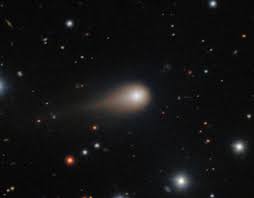
Breaking News
 Make Your Own Seasoned Rice Mixes!
Make Your Own Seasoned Rice Mixes!
 NASA Reveal Highest Resolution Visible Light and Infrared 3I/Atlas Images
NASA Reveal Highest Resolution Visible Light and Infrared 3I/Atlas Images
 We're evolving too slowly for the world we've built, according to science
We're evolving too slowly for the world we've built, according to science
 There Are No Easy Fights In The Struggle Against The Empire
There Are No Easy Fights In The Struggle Against The Empire
Top Tech News
 New Gel Regrows Dental Enamel–Which Humans Cannot Do–and Could Revolutionize Tooth Care
New Gel Regrows Dental Enamel–Which Humans Cannot Do–and Could Revolutionize Tooth Care
 Researchers want to drop lab grown brains into video games
Researchers want to drop lab grown brains into video games
 Scientists achieve breakthrough in Quantum satellite uplink
Scientists achieve breakthrough in Quantum satellite uplink
 Blue Origin New Glenn 2 Next Launch and How Many Launches in 2026 and 2027
Blue Origin New Glenn 2 Next Launch and How Many Launches in 2026 and 2027
 China's thorium reactor aims to fuse power and parity
China's thorium reactor aims to fuse power and parity
 Ancient way to create penicillin, a medicine from ancient era
Ancient way to create penicillin, a medicine from ancient era
 Goodbye, Cavities? Scientists Just Found a Way to Regrow Tooth Enamel
Goodbye, Cavities? Scientists Just Found a Way to Regrow Tooth Enamel
 Scientists Say They've Figured Out How to Transcribe Your Thoughts From an MRI Scan
Scientists Say They've Figured Out How to Transcribe Your Thoughts From an MRI Scan
 Calling Dr. Grok. Can AI Do Better than Your Primary Physician?
Calling Dr. Grok. Can AI Do Better than Your Primary Physician?
NASA Reveal Highest Resolution Visible Light and Infrared 3I/Atlas Images

While it poses no threat to Earth and will get no closer than 170 million miles to Earth, the comet flew within 19 million miles of Mars in early October.
We still could not resolve the nucleus even with the highest resolution images we will get.
Participants in this live event will include:
– NASA Associate Administrator Amit Kshatriya
– Nicky Fox, associate administrator, Science Mission Directorate
– Shawn Domagal-Goldman, acting director, Astrophysics Division
– Tom Statler, lead scientist for solar system small bodies
Spacecraft across the solar system, as well as ground-based observatories, have been able to observe 3I/ATLAS as it passes through our celestial neighborhood and study how the comet behaves.
In December, the comet will be ~9–10 times farther away from us (and from Earth-orbiting telescopes like Hubble or JWST) than it was from Mars/HiRISE in October. We will have more powerful scopes to look at it. December observations will give us great wide-field views of the tail and activity from a different perspective (and the comet will be post-perihelion and potentially more active), but they will not surpass the spatial detail achieved when it went past Mars.
Large ground-based earth telescopes (VLT, Gemini, Keck, future Rubin Observatory, etc.) with adaptive optics → Could reach ~100–300 km/pixel if we get ideal weather and other excellent seeing conditions.

 Unbanked In A Connected World
Unbanked In A Connected World

